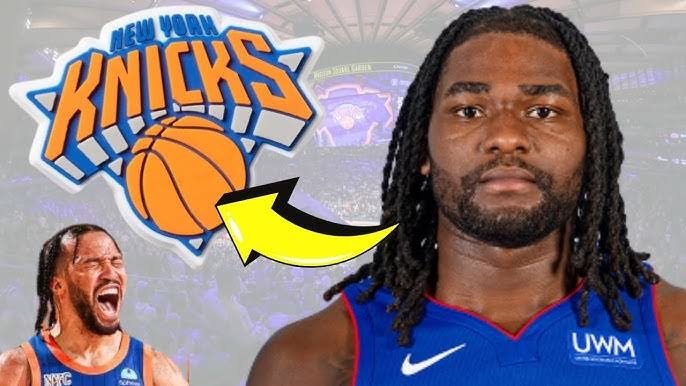This trade scenario highlights the potential for both teams to address key needs while also exposing risks that could impact their respective goals. Here’s a detailed breakdown:

Why This Trade Makes Sense for the Knicks
1. Backcourt Depth:
– Coby White’s scoring and playmaking would fill a critical gap, reducing the burden on Jalen Brunson and offering a spark off the bench.
– His ability to operate as a combo guard makes him versatile enough to fit multiple lineups.
2. Efficient Scoring:
– White’s shooting efficiency (44.7% FG, 37.6% 3PT, 83.8% FT) indicates he can thrive in a reduced role with less defensive attention, particularly against second units.
3. Affordable Contract:
– White’s $36 million over three years is team-friendly, providing excellent value for a player who could contribute immediately without straining the Knicks’ cap sheet.
—
Why This Trade Makes Sense for the Bulls
1. Crowded Backcourt:
– The Bulls have an abundance of guards, and moving White could clear the logjam while opening up minutes for Ayo Dosunmu and Alex Caruso.
– It allows the Bulls to focus on balancing their roster and addressing other areas of need.
2. Mitchell Robinson’s Defensive Impact:
– If Robinson is included, the Bulls gain a defensive anchor and elite rebounder, addressing their need for a rim protector.
– Robinson’s presence could elevate their defense, particularly in matchups against dominant big men.
Potential Concerns
1. For the Knicks:
– Losing Mitchell Robinson would leave a significant defensive void, especially with Karl-Anthony Towns as the primary center.
– The Knicks would need to acquire another rim protector or adjust their defensive schemes to mitigate Robinson’s absence.
2. For the Bulls:
– While White is expendable, the return package must align with their long-term goals.
– If Robinson’s injury history or contract concerns deter the Bulls, the value of the deal might not justify the move.
Alternative Trade Frameworks
– Knicks Perspective:
– If parting with Robinson is too costly, the Knicks could offer younger assets (e.g., Deuce McBride or Quentin Grimes) and draft picks.
– Adding a veteran center on a smaller contract (e.g., Isaiah Hartenstein) could help the Bulls while preserving some of the Knicks’ defensive depth.
– Bulls Perspective:
– The Bulls could include a secondary piece (e.g., a rotational forward) to sweeten the deal, ensuring the Knicks don’t feel the loss of Robinson too acutely.
Big Picture
– For the Knicks:
– This trade solidifies their backcourt depth and offensive versatility but forces them to address frontcourt defense through additional moves.
– If executed properly, the Knicks could emerge as a stronger playoff contender with a more balanced roster.
– For the Bulls:
– Acquiring Robinson and draft picks provides defensive stability and future flexibility, but they must ensure the trade aligns with their vision for a retooled roster.
Verdict:
This trade has potential for mutual benefit, but both teams need to weigh the risks and consider complementary moves to fully realize the deal’s upside.



